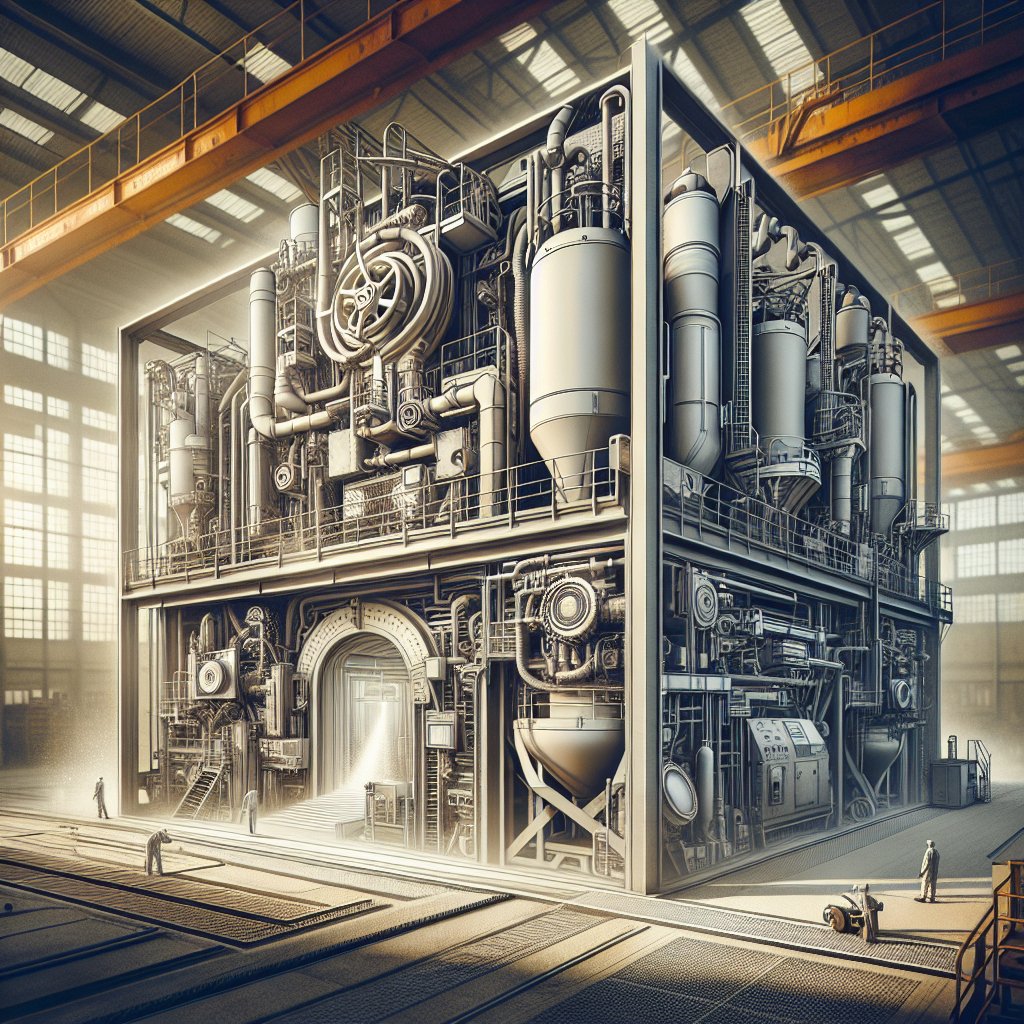
Industrial sandblasting equipment plays a crucial role in various sectors, providing an efficient method for surface preparation and cleaning. This article delves into the different types of sandblasting equipment, their applications, and the benefits they offer to industries ranging from construction to automotive manufacturing.
Types of Industrial Sandblasting Equipment
Sandblasting equipment comes in various forms, each designed to meet specific industrial needs. Understanding the different types of equipment is essential for selecting the right tool for the job.
Portable Sandblasters
Portable sandblasters are versatile and widely used in industries where mobility is crucial. These units are typically smaller and can be easily transported to different job sites. They are ideal for tasks such as cleaning small parts, removing rust, and preparing surfaces for painting. Portable sandblasters are often used in automotive repair shops and small-scale construction projects.
Cabinet Sandblasters
Cabinet sandblasters are enclosed systems that allow for more controlled and precise blasting. They are commonly used in manufacturing settings where small to medium-sized parts need to be cleaned or finished. The enclosed design minimizes dust and debris, making them suitable for indoor use. Cabinet sandblasters are often equipped with a recycling system that collects and reuses the abrasive material, reducing waste and operational costs.
Blast Rooms
Blast rooms are large, enclosed spaces designed for heavy-duty sandblasting operations. They are used for large-scale projects, such as cleaning and preparing large metal structures, ships, and industrial equipment. Blast rooms provide a controlled environment where operators can work safely and efficiently. These facilities are equipped with ventilation systems to manage dust and debris, ensuring a safe working environment.
Wet Sandblasters
Wet sandblasters use a combination of water and abrasive material to clean surfaces. This method reduces dust and is less abrasive than traditional dry sandblasting, making it suitable for delicate surfaces. Wet sandblasting is often used in the restoration of historical buildings and monuments, where preserving the integrity of the surface is paramount.
Applications of Sandblasting Equipment
Sandblasting equipment is employed across a wide range of industries, each benefiting from its unique capabilities. Here, we explore some of the most common applications.
Surface Preparation
One of the primary uses of sandblasting equipment is surface preparation. Before applying paint, coatings, or adhesives, surfaces must be clean and free of contaminants. Sandblasting effectively removes rust, old paint, and other impurities, ensuring a smooth and clean surface for optimal adhesion. This process is essential in industries such as automotive manufacturing, aerospace, and construction.
Cleaning and Maintenance
Regular cleaning and maintenance are vital for the longevity and performance of industrial equipment. Sandblasting is an efficient method for removing dirt, grease, and other residues from machinery and components. It is commonly used in the oil and gas industry, where equipment is exposed to harsh environments and requires frequent cleaning to maintain operational efficiency.
Restoration and Preservation
In the field of restoration, sandblasting is used to clean and preserve historical buildings, monuments, and artifacts. The ability to adjust the pressure and type of abrasive material allows for gentle cleaning that does not damage the underlying surface. This application is crucial for preserving cultural heritage and maintaining the aesthetic appeal of historical sites.
Etching and Engraving
Sandblasting is also used for artistic purposes, such as etching and engraving designs onto glass, stone, and metal surfaces. This technique allows for intricate patterns and designs to be created with precision. Artists and craftsmen often use sandblasting to produce decorative items, signage, and personalized gifts.
Benefits of Using Sandblasting Equipment
The use of sandblasting equipment offers several advantages, making it a preferred choice for many industrial applications.
Efficiency and Speed
Sandblasting is a fast and efficient method for cleaning and preparing surfaces. It significantly reduces the time required for manual cleaning and surface preparation, allowing projects to be completed more quickly. This efficiency translates to cost savings and increased productivity for businesses.
Versatility
With a wide range of equipment and abrasive materials available, sandblasting can be tailored to suit various applications and surface types. Whether it’s removing rust from metal or cleaning delicate stone surfaces, sandblasting offers a versatile solution for different industrial needs.
Improved Surface Quality
Sandblasting provides a uniform and consistent finish, enhancing the quality of the surface. This is particularly important in industries where surface appearance and texture are critical, such as automotive and aerospace manufacturing. A well-prepared surface ensures better adhesion of coatings and paints, resulting in a more durable and aesthetically pleasing finish.
Environmental Considerations
Modern sandblasting equipment is designed with environmental considerations in mind. Many systems include dust collection and recycling features that minimize waste and reduce the environmental impact. Additionally, the use of eco-friendly abrasive materials, such as crushed glass and walnut shells, further enhances the sustainability of sandblasting operations.
Conclusion
Industrial sandblasting equipment is an indispensable tool in various sectors, offering efficient and versatile solutions for surface preparation, cleaning, and restoration. By understanding the different types of equipment and their applications, businesses can select the right tools to meet their specific needs. With advancements in technology and a focus on sustainability, sandblasting continues to evolve, providing industries with innovative and environmentally friendly solutions for their surface treatment requirements.

